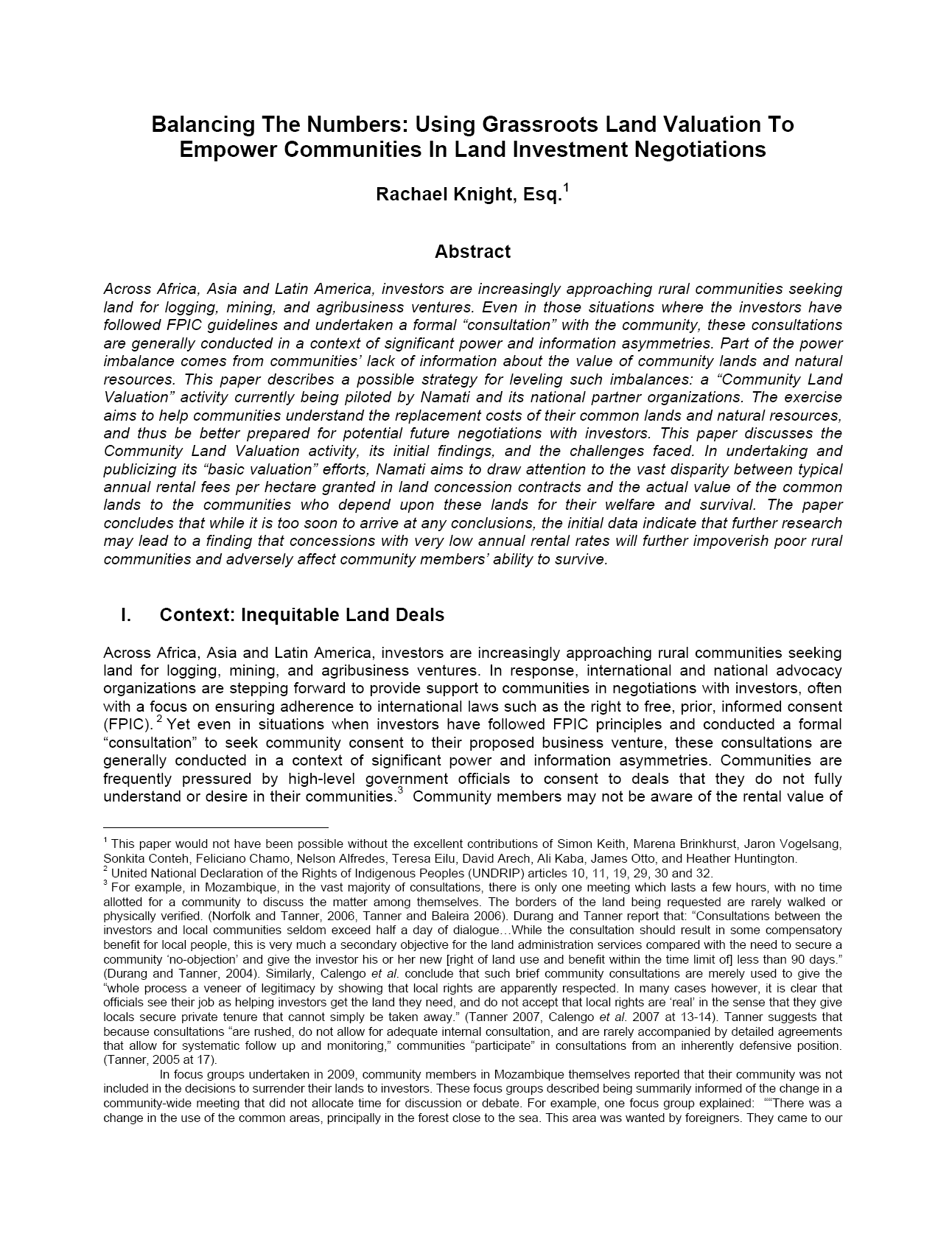Resource information
Across Africa, Asia and Latin America, investors are increasingly approaching rural communities seeking land for logging, mining, and agribusiness ventures. Even in those situations where the investors have followed FPIC guidelines and undertaken a formal “consultation” with the community, these consultations are generally conducted in a context of significant power and information asymmetries. Part of the power imbalance comes from communities’ lack of information about the value of community lands and natural resources. This paper describes a possible strategy for leveling such imbalances: a “Community Land Valuation” activity currently being piloted by Namati and its national partner organizations. The exercise aims to help communities understand the replacement costs of their common lands and natural resources,
and thus be better prepared for potential future negotiations with investors. This paper discusses the Community Land Valuation activity, its initial findings, and the challenges faced. In undertaking and publicizing its “basic valuation” efforts, Namati aims to draw attention to the vast disparity between typical annual rental fees per hectare granted in land concession contracts and the actual value of the common lands to the communities who depend upon these lands for their welfare and survival. The paper concludes that while it is too soon to arrive at any conclusions, the initial data indicate that further research may lead to a finding that concessions with very low annual rental rates will further impoverish poor rural communities and adversely affect community members’ ability to survive.

